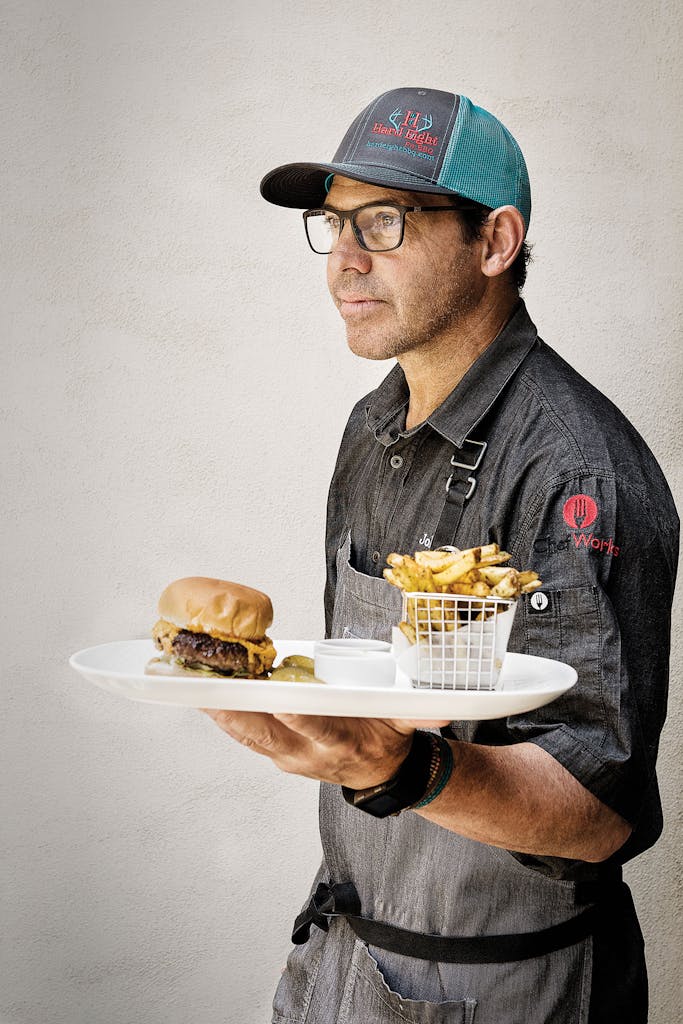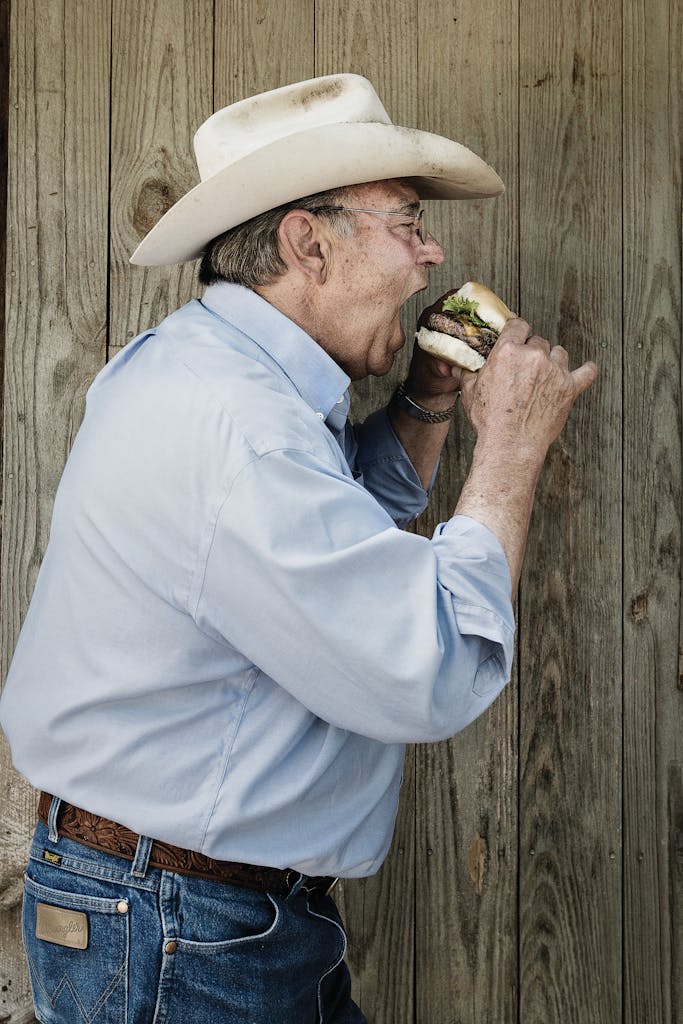Tom Perini was a rancher before converting an old barn into Perini Ranch Steakhouse in the West Texas town of Buffalo Gap in 1983. He has cooked at the James Beard House, in New York, and written a book, Texas Cowboy Cooking. In 2005 he and his wife, Lisa, started the annual Buffalo Gap Wine & Food Summit.

New York transplant John Tesar moved to Dallas in 2007 to become the chef at the Rosewood Mansion on Turtle Creek. He has appeared on Top Chef and has been nominated for the James Beard Foundation’s Best Chef: Southwest award. He is currently the executive chef at Knife steakhouse.
The Backstory
Tom Perini: We used to do a pretty standard burger cooked on the grill, but it tended to fall apart, so we switched to the flat top. Around ten years ago, people started expecting more. We dissected every single element. We bought the highest quality we could. The result is our Ranch Burger, with a choice of green chiles, bacon, either medium-sharp cheddar or provolone, and mushrooms. (I love grilled mushrooms.)
John Tesar: In the late seventies, I was a surfer and a skateboarder on Long Island, so I was at the beach all day. I started cooking at this local watering hole called Magic’s Pub—it’s since closed—in Westhampton Beach, doing burgers over a charcoal grill. Around the eighties, the whole burger revolution started, when dining moved away from continental cuisine toward American cooking.
The Meat
TP: We use full-muscle chuck—no scraps or trimmings. It’s 20 percent fat. That’s where the flavor is. We add our own steak-seasoning mix. We also add a tiny bit of cornstarch, which is white. That way the cook can see it and season the patty evenly.
JT: Our meat is Angus sirloin from 44 Farms, in Cameron. It’s 20 percent fat, and it’s the most moist meat I’ve ever eaten. I like to put a little smear of butter on the patty first, then salt and pepper one side, put it facedown, and season the other side.
The Patty

TP: We roll the meat into a ball, then form a patty about three fourths of an inch thick. A hand-pressed patty is nice and loose, not packed solid like a commercial one. To me, eight ounces is the right size. We serve it open-faced, so you can see you’re getting something special.
JT: Before you cook it, mash the patty down between two pieces of parchment or wax paper, because it’s going to buckle up. Not a hard smash, but a good press. A six-ounce patty is the perfect size for the bun we use. Pour some of the fat off about halfway through cooking.
The Bun
TP: We get sourdough buns from Sheila Partin, a Houston baker. They have just a little sweetness to them, and they don’t collapse.
JT: You want a soft, squishy bun that doesn’t compete with the beef. I just toast the bun, no butter. I think the flavors of cheese and a buttered bun clash.
The Heat
TP: We cook it medium, but personally, I like mine medium-rare-ish. The best way to cook a burger at home is in a well-seasoned cast-iron skillet. Or grill it. For an eight-ounce patty, do six minutes per side over medium coals. Just be sure it doesn’t fall through.
JT: A grill leaves these bitter black lines that are actually charred, burned meat. Get a cast-iron pan. Or a blue-steel pan—it’s a little thinner. For a six-ounce patty, cook it four minutes on each side over medium-high heat. The meat should sizzle a little bit in its own fat.
- More About:
- Tom Perini







